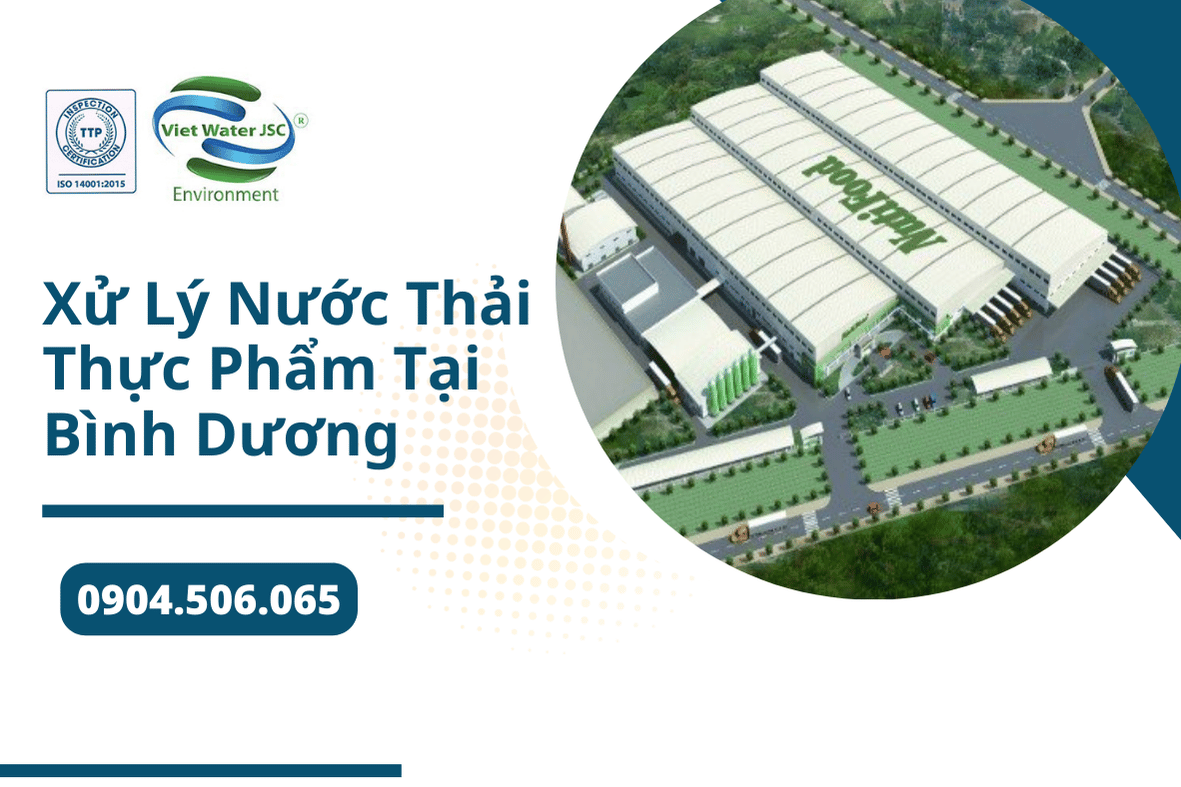Functional Food Production Wastewater Treatment
14 Nov, 2025VIET WATER provides complete wastewater treatment solutions for functional food manufacturing plants...
In the context of rapid development in the food processing industry in Binh Duong, the issue of food wastewater treatment has become a significant challenge for the environment and public health. Wastewater from food processing plants contains numerous pollutants that can adversely impact water sources and ecosystems if not treated properly. Therefore, implementing effective solutions for food wastewater treatment not only helps protect the environment but also contributes to ensuring the health of the community. This article will discuss the characteristics of food wastewater, treatment technologies and methods, processing procedures, benefits, challenges, and solutions for food wastewater treatment in Binh Duong.

II. Characteristics of Food Wastewater
A. Chemical Composition of Food Wastewater
Food wastewater typically contains many pollutants, including organic matter, fats and oils, microorganisms, and chemicals. The organic matter in wastewater serves as a nutrient source for microorganisms, leading to environmental pollution if not treated promptly. Additionally, fats and oils in wastewater can reduce the self-purification capacity of water sources, resulting in groundwater and surface water pollution.
B. Sources of Food Wastewater Generation
Food wastewater is generated from various sources, primarily food processing plants, food processing facilities, and manufacturing establishments. Activities such as processing, packaging, and preserving food all generate substantial volumes of wastewater with diverse pollutant compositions. Thus, managing and treating wastewater from these sources is essential to ensure environmental sanitation.
III. Technologies and Methods for Food Wastewater Treatment
A. Collection and Classification Systems for Wastewater
One of the critical factors in treating food wastewater is having an effective collection system. A wastewater collection system from generation sources needs to be established to ensure that wastewater is separated and treated correctly. Classifying wastewater by its source and composition is also an essential part of the treatment process, helping to select suitable technologies and methods.
B. Biological Treatment
Biological treatment is one of the most effective methods for treating food wastewater. The activated sludge system is a common technology used in biological wastewater treatment, employing microorganisms to decompose organic substances in wastewater. This technology effectively treats pollutants while reducing the oxidation concentration in the water.
Additionally, Biofilter technology is widely applied in food wastewater treatment. This technology uses filtering materials and biofilms to treat wastewater, effectively removing pollutants and minimizing odors.
C. Chemical-Physical Treatment
For food wastewater containing many difficult-to-decompose pollutants, applying chemical-physical treatment methods is necessary. Methods such as precipitation and coagulation effectively remove pollutants and allow for wastewater reuse. Implementing chemical-physical technologies enhances wastewater treatment efficiency while minimizing negative environmental impacts.
D. Membrane Filtration Treatment
Membrane filtration technology, including Reverse Osmosis (RO) and nanofiltration, is applied to remove very small pollutants in food wastewater. This technology helps achieve clean water that meets standards, which can be reused in various fields.
E. Centralized Treatment Systems
For industrial zones, establishing centralized wastewater treatment plants is crucial. These plants can handle large volumes of wastewater from various sources, ensuring that treated water meets standards before being released into the environment. This is also an effective solution to reduce costs and enhance treatment efficiency.
IV. Food Wastewater Treatment Process
A. Steps in the Treatment Process
The food wastewater treatment process typically includes the following steps:
V. Benefits of Food Wastewater Treatment
A. Environmental Protection
Treating food wastewater helps minimize water pollution and protect living environments. Untreated wastewater can lead to severe pollution, affecting the survival of aquatic organisms and surrounding ecosystems.
B. Ensuring Public Health
Food wastewater treatment contributes to preventing disease outbreaks and protecting public health. Wastewater contains numerous harmful microorganisms that can cause serious infectious diseases if not treated properly.
C. Cost Savings
Investing in wastewater treatment technology can help businesses save costs in the long term. By treating wastewater correctly, businesses can minimize penalties for violating environmental regulations and enhance their brand image.
VI. Challenges in Food Wastewater Treatment in Binh Duong
A. Difficulties in Technology Investment
One significant challenge in food wastewater treatment in Binh Duong is the high cost of technology investment. Many businesses lack the resources and knowledge to apply advanced wastewater treatment technologies.
B. Inconsistent Regulations and Policies
Moreover, the regulatory and policy framework for wastewater treatment in Binh Duong is not yet synchronized, making it challenging for businesses to comply with treatment processes.
VII. Solutions and Recommendations
A. Invest in New Technologies
It is essential to encourage businesses to invest in research and development of new technologies for food wastewater treatment. These technologies are not only more effective but also cost-efficient in operational processes.
B. Training and Raising Awareness
Organizing training programs for businesses and the public about the importance of wastewater treatment will enhance awareness and responsibility in protecting the environment.
C. Strengthening Cooperation Among Stakeholders
Close cooperation between regulatory agencies, businesses, and communities is needed to implement comprehensive solutions for food wastewater treatment.
VIII. Conclusion
Food wastewater treatment in Binh Duong is an urgent and necessary task to protect the environment and public health. By applying modern technologies and raising awareness among businesses and the public, Binh Duong can achieve effective wastewater treatment goals, protect the environment, and improve the quality of life for its residents.
CONTACT INFORMATION: VIET WATER JSC